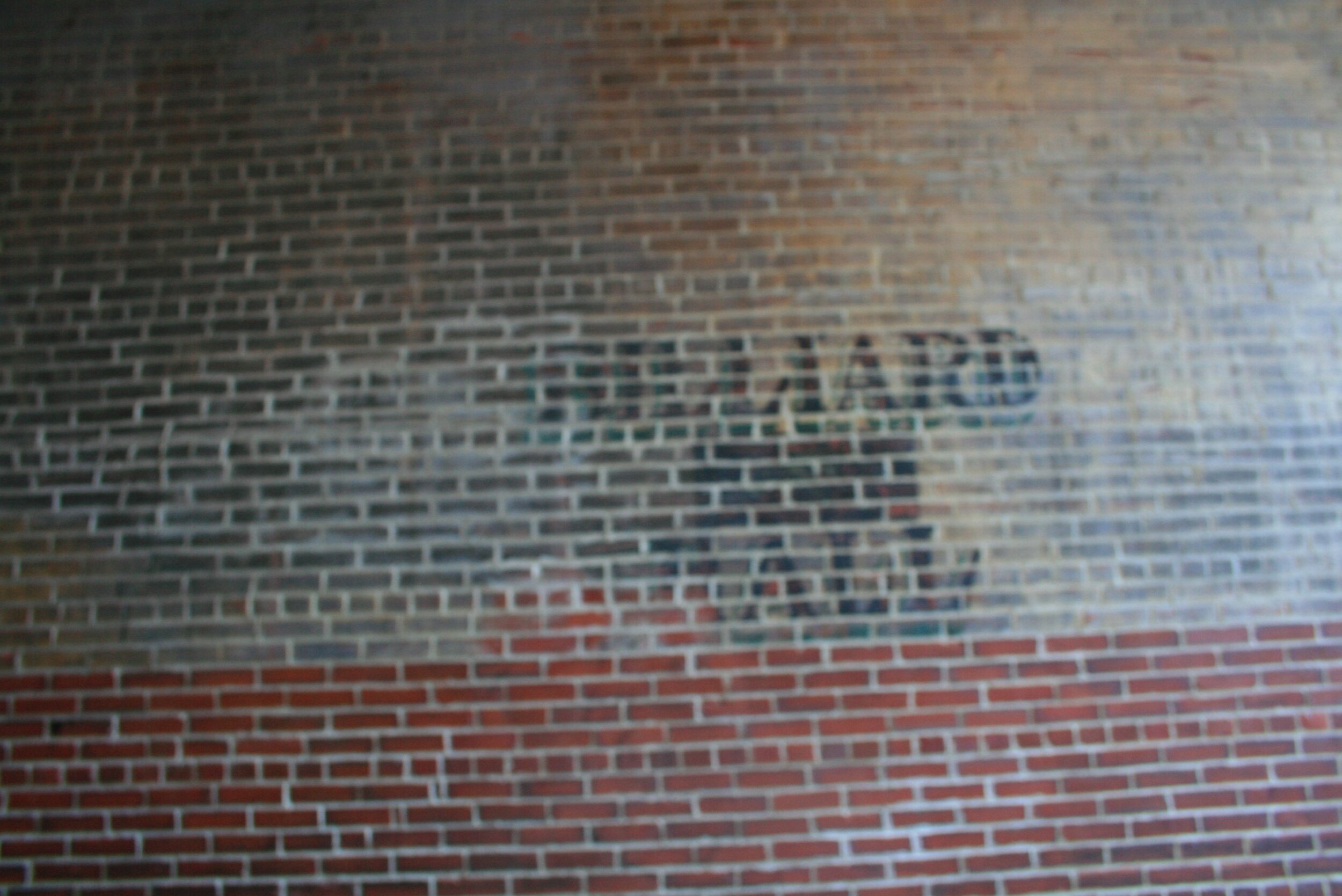By Anastasia Azenaro-Moore
Painted wall signs are nearly as old as writing itself. Ancient Egyptians used to carve public notices on steles, Phoenician merchants painted rocks to advertise local market stalls along well-traveled trade routes and painted wall advertisements were found in the ruins of Pompeii. Outdoor, painted wall advertising continued to grow and evolve, even as literacy declined, during the Middle Ages. The first inkling of the modern American wall advertisements came from the European Renaissance when painted signs were fixed to the fascia of buildings. The apex of outdoor advertising was the creation and proliferation of painted wall signs throughout American cities from the late 19th century into the mid-20th century.
Wall-painting in America rose to prominence in the late 19th century, not so coincidentally at the same time new building technology allowed for taller structures. The signs painted on these structures, often three or four stories up from the ground, were intended to be visible for faster modes of transportation. During the late 19th century, elevated trains first made their appearance in America’s cities as did electric trolleys. Later, in the 20th century, automobiles would stake their claim in America’s cities, and in order for these signs to be seen from increased speed they had to be larger.
Portland has dozens of these painted wall signs, known as “ghost signs”, mostly concentrated in the Old Port and along Congress Street. These signs span over 100 years and advertise everything from hotels to locomotive manufacturing. These signs are in varying states of decay with some, like the “E. Swasey & Co” sign at 267 Commercial Street in remarkable good condition for its age, while others like the “Everett Chambers Hotel” at 51 Oak Street are in rougher shape despite being newer. This is largely due to the paint used, with older white lead-based paints holding up better against the elements than colored paints.
Other signs, such as the “Casco” Beverages sign at the former Corbetts Market Groceries on 21 Pleasant Street, are examples of a privilege sign. Privilege signs were wall advertisements for national or local companies, such as Coca-Cola. In exchange for the use of wall space, the local business or merchant would be promoted on the sign free of cost. Often these companies chose to place these privilege signs on retailers that sold their products - hence the prevalence of privilege signs for local markets and grocery stores - but, on rare occasions, national companies would use the walls of non-related retailers.
Portland’s ghost signs face many of the same threats that ghost signs face nationwide: rampant development and general wear and-tear due to exposure to wind, sun, rain and snow. We can even see, if we try hard enough, where some of these former ghost signs once stood. Take the Dry Dock, for example, where one can still see the shape of a former sign for Randall and McAllister’s Coal Company.
These ghost signs are an important part of Portland’s legacy and they reveal stories of immigration, a changing economy, and a growing city. These remnants can be seen on apartment buildings, restaurants and department stores; creating a map of Portland’s past. This map lays out our city’s history and the key is to just look up.
11 Brown Street: Eastman Brothers & Bancroft
Eastman Bros & Bancroft was established in 1865 by Bricino M. Eastman, Fred E. Eastman, and Ermon D. Eastman. The department store specialized in dry and fancy goods including wallpaper, glassware, lady’s cloaks, silks, linens and suits. The store closed in 1932, a victim of the Great Depression, and in 1937 Filenes opened in this location.
16 Forest Ave: Congress Square Billiards Hall
Congress Square Billiards (8a Forest Ave) was established in 1933 and lasted until 1954. Its name derived from the pool hall’s proximity to Congress Square, a small space, now a park, to the immediate north of the Eastland Hotel (completed in the late 1920s). In 1940, Congress Square Billiards had 8 pool tables and 2 billiards tables. While there is scant information available on the history of Congress Square Billiards itself, the existence of the billiards hall speaks to a larger narrative of the night-life of Portland in the mid 20th century. In 1940, there were six locations that were advertised where one could play pool or billiards (including the Boys Club of America and the Y.M.C.A) within a small section of town between State Street and Forest Ave. Portland’s downtown also boasted 9 bowling alleys within a two-mile radius. Today, there are three pool halls in the entire city and two bowling alleys.





